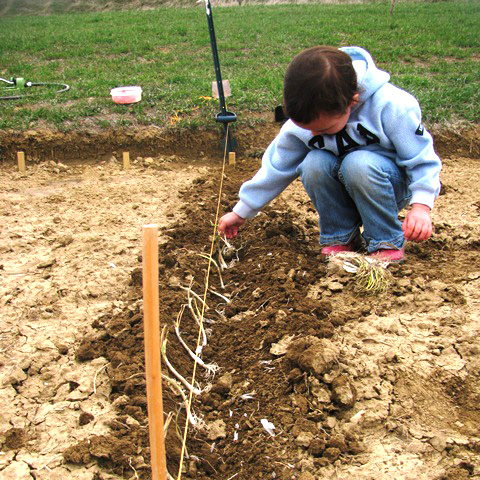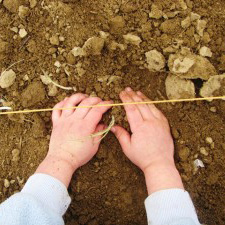Spring is such a tease! Yesterday at noon it was 72 degrees and then by three o’clock it was 42 degrees with 35 MPH winds. Days like that remind me why we are not in the garden yet, even though it is technically spring. It’s not time. Meteorological history lets us know when we can start gardening. A question I receive often from new gardeners is, “When do I start planting?” The answer is scientific. To find out, we need to collect some key information.

What plant hardiness zone do you live in?
Knowing your zone will be a reference point on what and when to plant. I live in NW Iowa and that is zone 5A. Brrr!
According to the USDA, “Plant hardiness zone designations represent the average annual extreme minimum temperatures at a given location during a particular time period. They do not reflect the coldest it has ever been or ever will be at a specific location, but simply the average lowest winter temperature for the location over a specified time. Low temperature during the winter is a crucial factor in the survival of plants at specific locations.”
If you don’t know what zone you live in, check out the map. Enter your zip code and it will tell you exactly what zone you live in, no guessing!
What is your frost free date?
The frost free date is the last expected spring frost for your hardiness zone. If you plant warm season crops prior to this date, your chances of having to re-plant are high. It’s simply too cold for them (and me, to be honest).
To find the frost free date for your area, I suggest going to the Old Farmer’s Almanac. Again, enter your zip code and it will give you the last spring frost date. My frost free date is April 26.
Now that you know the zone and frost free date for your area, you need to know the difference between a cool season crop and a warm season crop (also referred to as a cold hardy and warm hardy).
Cool season crops are the first vegetables you will plant in the garden. They like it cold. Cabbage, carrots, broccoli, spinach, onions, radishes, peas, lettuce, and turnips grow best when the temperature is below 70 degrees. When the temperature is higher than that, growth changes, the plant can become woody, bitter, or start to bolt (which means they produce a seed stalk).
Warm season crops cannot handle the cold. They are sensitive to frost and should be planted after the frost free date. They love warm soil and sunny skies! Examples of these crops would be tomatoes, peppers, eggplant, watermelon, squash, beans and sweet corn.
The Old Farmer’s Almanac also gives a list of Best Spring Planting Dates for Seeds. This is a very helpful site. Our county extension office and garden centers have a list similar to the one on the Old Farmer’s Almanac. This will be an excellent guide as you begin gardening.
Depending on where you live, the answer to “When can I start planting?” may be now. Lucky you! As for me, I am preparing to plant onions, lettuce, carrots, onions, peas, radish and potatoes, our favorite cool season crops. Just like spring, I have a teaser for the next blog post. The next step is to prepare the garden soil for planting. Remember, the soil is the key to your success. Soil has to be prepped for planting. It has to be the right texture with the right nutrients. Until next week… when we dig into the soil.
I am happy to be gardening with you.







